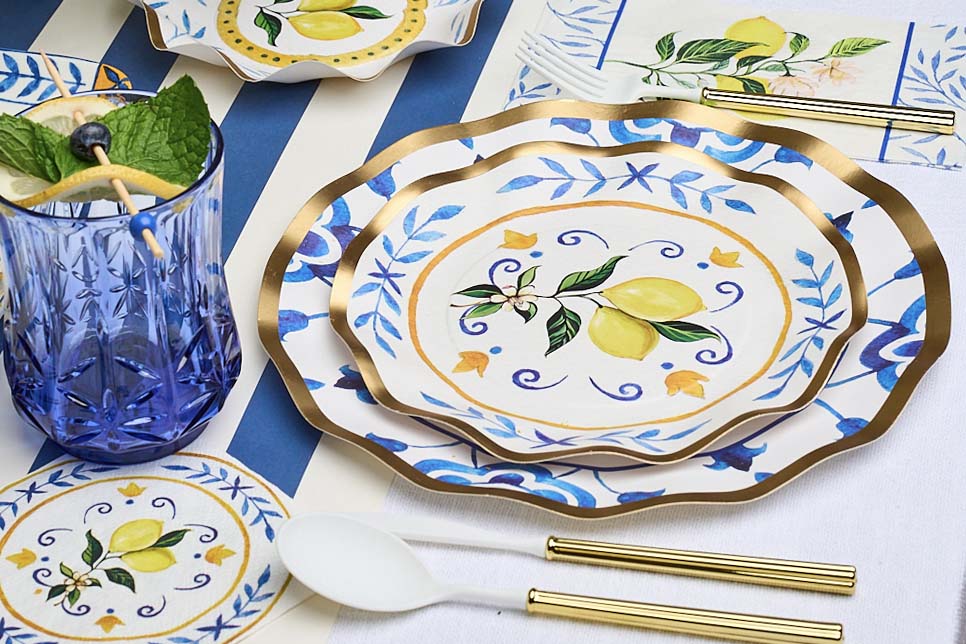What Is a Pizza Peel and How Do You Use It?
Pizza remains one of the world’s most popular foods—and for good reason! While we all know that pizza tastes great, it’s also extremely convenient, economical, and—if you’re making your own at home—nutritious.
Indeed, making your own pizza at home is a great choice for any meal as it can accommodate any taste or diet (we’re looking at you, cauliflower pizza!).
If you want to make your pizza-making experience as authentic as possible, then you might keep running across the pizza peel. While you may not have heard of it before, it's definitely an essential tool for making the perfect pizza at home.
So, to find out what a pizza peel is and how to use one, we compiled this brief guide to help you have a truly amazing culinary experience.
So, What’s a Pizza Peel?
If you’re anything like us, then the first image that pops into your mind when you think of the word “peel” is a tool for removing the skin of fruits and veggies. But surprisingly, the word has another use: “peel” can also refer to a spade-shaped instrument with a long handle.
It’s possible that the word “peel” came from the French word pelle, which describes a spade or a shovel. Peels were traditionally used by bakers for getting baked goods in and out of the oven. The flat surface of the peel combined with a handle made it the perfect tool for this purpose.
So, a pizza peel is essentially a flat shovel-like tool with a long handle that can help you get pizza in and out of the oven without getting things too messy. A pizza peel can be either square or round in shape, and come in a wood or metal material.
Despite the convenience, another advantage of using a pizza peel is safety. A professional wood-fired oven can reach temperatures of 1,000 degrees Fahrenheit, making the long handle a necessity.
While a regular home oven doesn’t get that hot, burns are still very much a possibility. To prevent any injuries, a pizza peel is a must.
Is a Wood Pizza Peel Better Than Metal?
When it comes to pizza peels, there are two materials that are available to you: wood and metal. While there is no clear answer, considering the pros and cons of each can help you make a decision about what type of pizza peel you should invest in.
Wood Pizza Peels
Wooden pizza peels have been the traditional choice for bakers for centuries. They can either be “raw” or coated with a slick finish.
Of course, coated peels are much easier to clean, which makes it an instant plus in our book. Plus, the slick surface of finished wood peels can let pizza slide on and off more easily.
But (and there’s always a “but”) coated peels are a little tricky when it comes to uncooked pizza. That’s because condensation can form between the non-absorbent surface and the pizza dough. So, when you try to get your uncooked pizza off the peel and into the oven, there might be some hesitancy.
Of course, there are a few tricks to solving this problem, such as sprinkling a little cornstarch on the wooden peel before working with pizza dough.
Unfinished wood peels, on the other hand, have a rougher texture, which gives them more grip. Plus, because raw wood tends to be more porous, unfinished wood peels can wick some of the moisture away from the wet pizza dough.
Whether it is raw or finished, wood pizza peels tend to be thicker than metal peels. If you’re starting out as a pizza maker, it might be a little tricky to slide a wood peel under a baked pizza. This makes it just a little harder to remove a finished pizza from the oven.
Metal Pizza Peels
Metal pizza peels have a base that’s made out of aluminum and a handle that’s made out of wood.
Metal peels tend to be thinner than wooden ones, which makes it a better choice for sliding pizza out of the oven. However, when it comes to getting the pizza in, things tend to get a little messy.
Because aluminum is non-porous, there’s nowhere for the moisture from wet pizza dough to go. Plus, differences in temperature between aluminum and pizza dough can increase condensation. All this spells out too much moisture, and thus, stickiness.
The Perfect Compromise
Because wooden peels are great for getting pizza in the oven, while metal peels are great for getting them out, the perfect solution is getting both types of peels.
Of course, not everyone has the kitchen real estate to store two pizza peels nor the budget to get both. For this reason, we recommend investing in a high-quality wood pizza peel, a tool used by bakers for centuries.
How Do You Use a Pizza Peel?
Of course, the first step of using a pizza peel is making the pizza that you plan to bake. While we won’t get into the details of pizza-making, the options for what you can create are truly endless.
Basically, once you have the pizza dough formed, the pizza peel comes into play with the following steps:
- Dust the pizza peel with some flour or cornstarch
- Lift up your pizza and place it on top of the peel
- Top your pizza with sauces, cheeses, meats, and veggies (and anything else we forgot to mention!)
- Try to avoid getting any toppings on the peel to avoid stickiness
- Using the peel handle, give the pizza a little shake to make sure it isn’t stuck
- Open your oven and pull out the rack that you’re baking the pizza on (preferably with a pizza stone on it)
- Keeping the pizza peel at a shallow angle, use back-and-forth hand motions to gently deposit the pizza onto the pizza stone
- Close the oven and let the pizza cook
- Once finished, slide the peel under the finished pizza using short, jerking motions until the pizza is on the peel again
It takes a little practice to get the hang of the wrist action that you need to successfully use a pizza peel. If you’re a beginner, you can practice with an unheated oven. You can even use other materials instead of pizza.
What Else Is a Pizza Peel Good For?
Even if you’re a homemade pizza aficionado like us, a high-quality pizza peel is definitely an investment. So, it’s natural to want to get other uses out of it. Luckily, a pizza peel is an extremely versatile tool and is great for home bakers of all kinds.
A pizza peel—despite its name—isn’t only good for making pizza. In fact, any kind of baked goods and dishes can benefit from a pizza peel. For instance, delicate bread and pastries shouldn’t be removed by hand as that can ruin their shape and structure, making a peel the perfect solution.
Besides bread, you can also use a pizza peel to remove homemade pies, quiches, and casseroles dishes from the oven. This is a great way to prevent your baked masterpiece from sitting on a cold surface.
If you have a large oven, a pizza peel is a good way to reach food that is baking in the back. Overall, it’s good for safety as it prevents you from keeping your hands out of a hot oven and away from hot baked goods.
Even if you don’t plan to bake anything, a wood pizza peel can double as a cutting board and serving platter. While we certainly recommend investing in a separate wood cutting board, a pizza peel can make for a beautiful display of charcuterie, fruit, or pastries.
Is a Pizza Peel Necessary?
While you can probably find a way to get a pizza onto a hot pizza stone without using a peel, it’s the getting pizza out part that makes us consider buying one.
This is because a pizza stone heats up to extremely high temperatures. If you remove it when your pizza is finished baking and place it on a cold surface, it can actually crack. So, you would need to find a way to get the pizza out without touching the stone.
Unfortunately, there is no substitute for a pizza peel for this. Because of its thinness, a pizza peel is the most convenient way of sliding between the pizza and the pizza stone.
Even if you figure out a way to bake the perfect pizza without this tool, it still might be a pleasure to keep a pizza peel in the kitchen. A high-quality pizza peel is easy to store and looks amazing. So, for this reason, we think that a pizza peel is necessary for an authentic pizza-making experience.
Time To Get Cooking
A pizza peel will not only make your pizza-making experience much easier but make you feel like a professional. For the best pizza peel—along with some stylish plates to serve them on—Sopistiplate has something to fit all tastes.
Sources:
The 2019 Pizza Power Report: A State-of-the-Industry Analysis | PMQ











